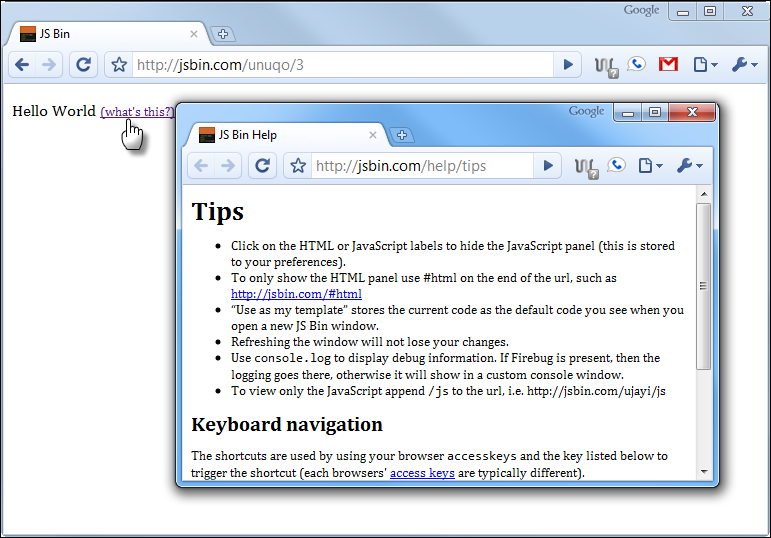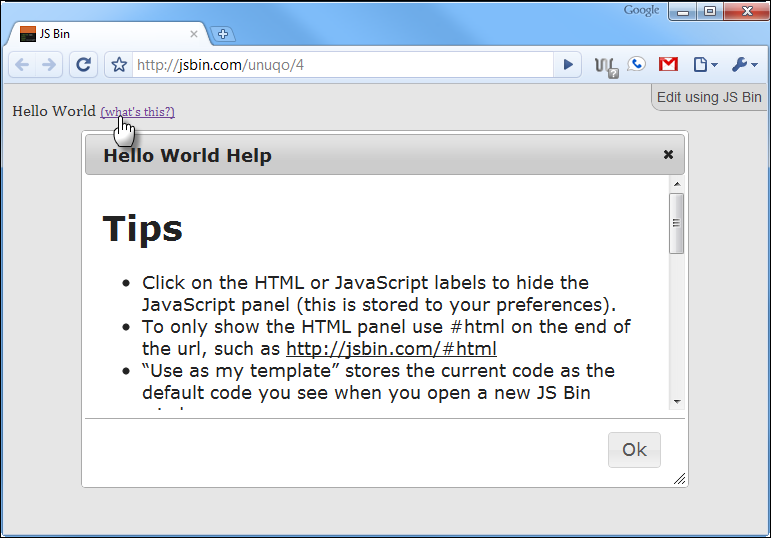HTML/JS: Progressive Enhancement
The great thing about a semantic approach to web development is how nice and easy it can be to make progressive enhancements.
For example, suppose I have a “what’s this” help link beside some potentially confusing statement:

Nothing fancy here—just a link with a _blank target (source, demo):
<p>Hello World
<a href="/help/tips"
target="_blank"
title="Hello World Help"
class="help-link">(what's this?)</a></p>
It’s not very pretty but it gets the job done without any Javascript. Let’s make it sexy:

Here we’ve augmented the help link with a nice jQuery UI dialog instead of a browser popup (source, demo):
$(function(){
$('.help-link').click(function(){
$('<div></div>')
.attr('title', this.title)
.load(this.href)
.dialog({
modal: true,
buttons: {
Ok: function () {
$(this).dialog('close');
}
},
width: 600,
height: 350
});
return false;
});
});
This doesn’t require any changes to the HTML/CSS—it uses existing attributes like href and title to wire itself up to the link. And, if JS is disabled or broken, the link will still work.
By applying incremental enhancements in this fashion, we can easily maintain decent support for less-capable browsers while keeping our code clean and elegant.
You might notice, too, that this JS snippet is looking at a class (help-link), not an id. Since it infers everything it needs to show the dialog from the link itself, this snippet will work on any link in the page tagged with the help-link class. Nice, right?
